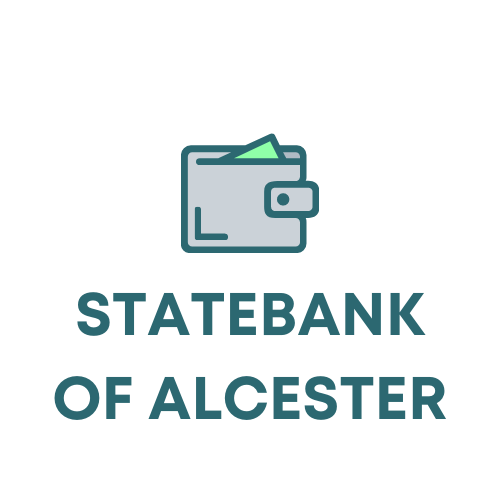In today’s digital age, streamlining document processing is more important than ever. Businesses are constantly looking for ways to increase efficiency and reduce manual workload. One significant advancement in this realm is the use of finance OCR (Optical Character Recognition) software. This technology has the potential to transform how organizations handle their financial documents.
The basics of OCR software
Advanced finance ocr software functions by transforming various document types, including paper and PDF files, into editable and searchable formats. Its primary role is digital text conversion, enabling users to effortlessly extract information from a wide range of documents.
This technology facilitates the scanning and archiving of invoices, ensuring they are securely stored in a digital format. Consequently, businesses can effortlessly maintain an organized document management system.
How it works
The core mechanism behind OCR software involves capturing images of documents using a scanner. These images are then analyzed and processed to convert the visual data into machine-readable text. The text extracted is placed in editable and searchable formats, making it easier to access necessary information.
Implementing OCR software in your financial processes can greatly reduce the time spent on manual data entry. Instead of painstakingly inputting each piece of information by hand, the software automates the process, increasing overall productivity.
Key benefits for financial departments
The application of OCR technology offers numerous advantages for financial departments. From improving accuracy to saving time, the positives are plentiful. Let’s explore some of these benefits in detail.
Enhancing invoice management
 One of the primary uses of finance OCR software is in the realm of invoice management. By utilizing this technology, companies can automate the entire invoice management workflow, handling large volumes of invoices swiftly and accurately.
One of the primary uses of finance OCR software is in the realm of invoice management. By utilizing this technology, companies can automate the entire invoice management workflow, handling large volumes of invoices swiftly and accurately.
Instead of relying on physical copies that can be misplaced or damaged, scanned digital versions are archived securely. This not only saves storage space but also facilitates easy retrieval whenever needed.
Streamlining accounts payable processes
The role of OCR software extends beyond just managing invoices. It plays a pivotal part in automating the accounts payable process. By directly extracting data from documents, the software minimizes the need for manual intervention.
Consequently, accountants and financial personnel can focus on higher-value tasks rather than mundane data entry. With automated processing, companies ensure timely payments while reducing the likelihood of errors.
Regulatory compliance assistance
Adhering to regulatory standards is essential for any business. Finance OCR software assists with regulatory compliance by ensuring that all documentation is maintained correctly and consistently formatted. This aids in audits and helps avoid potential legal issues.
Moreover, the assurance that documents are properly digitized supports transparency and accountability within the organization.
Reducing manual data entry
Let’s delve deeper into one of the most impactful benefits—reduction of manual data entry. Traditional workflows often require employees to enter data manually, which is not only time-consuming but also prone to mistakes.
Automation of tasks
With OCR, the vast majority of data extraction becomes automated. Information from scanned documents is immediately converted into text, meaning data entry roles become less focused on inputting data and more on verifying and analyzing it. This shift leads to greater job satisfaction and empowered teams.
This automation results in a substantial decrease in the number of human errors. Transactions are recorded with remarkable precision, leading to more reliable financial records.
Impact on productivity
It’s clear that minimizing manual efforts boosts productivity. Employees freed from monotonous tasks have more bandwidth to engage in strategic, value-driven activities. Consequently, this fosters innovation and contributes to company growth.
This boost in effectiveness can ripple outwards, influencing various aspects of the business, from improved client interactions to better internal communication.
Real-world applications and case studies
Your company isn’t the first to consider implementing OCR solutions. Numerous businesses have successfully integrated this technology into their operations, witnessing substantial improvements.
Small enterprises
For smaller entities, managing finances without advanced tools can be overwhelming. Yet, with OCR software, many have found a way to efficiently manage their finances without extensive resources. They can scan and archive invoices seamlessly, aiding their invoice management.
These establishments benefit immensely as they navigate limited budgets by maximizing resource allocation for growth-centric activities. Optical character recognition serves as an accessible gateway to achieving operational excellence.
Large corporations
Meanwhile, larger corporations see even greater returns on investment. Their high volume of transactions necessitates streamlined processes. OCR software provides the scalability required to handle such vast amounts of data effortlessly.
By integrating this technology, big firms not only optimize their accounts payable process but also unlock deep analytical insights through structured data accumulation. This drives informed decision-making grounded in accurate, real-time information.
Future trends and technological advancements
The trajectory of OCR technology is promising, especially within financial sectors. Emerging trends suggest even more sophisticated functionalities will soon be mainstream, offering enhanced capabilities to users.
Artificial intelligence and machine learning
AI and ML are expected to further elevate OCR applications. These technologies could significantly improve the data extraction from documents by learning and adapting to diverse document styles and structures.
Thanks to AI and ML, future OCR software might identify context-specific nuances, making the technology smarter and more intuitive. Imagine a system that not only reads documents but understands their broader context, significantly boosting operational intelligence.
Integration with other systems
Seamless integration will become a hallmark of next-gen OCR tools. Enhanced compatibility with ERP, CRM, and other enterprise systems means smoother workflows and comprehensive functionality. Automation of invoice processing could effectively connect with broader financial ecosystems.
This holistic approach will pave the way for seamless financial operations, bringing together varied facets of business under one coherent umbrella.
Challenges and considerations
While the upsides are compelling, it’s crucial to acknowledge certain challenges when adopting finance OCR software. Preparedness can help mitigate these concerns and ensure a smooth implementation experience.
Initial setup and training
The initial phase may involve considerable effort. Training staff to efficiently use OCR systems is vital. Employees must adapt to the new paradigms of digital handling, understanding the nuances of scanning and archiving documents.
Providing adequate training ensures that the workforce can leverage the full potential of the software, making the transition seamless and productive.
Cost implications
Adopting advanced OCR solutions involves upfront costs. It’s essential to weigh these against the long-term savings and productivity gains. For many businesses, the return on investment justifies the expenditure, thanks to the resultant efficiencies and error reduction.
Nevertheless, thorough planning and budgeting facilitate an effective rollout, allowing enterprises to reap maximum benefits while staying financially prudent.
Transforming your company’s document management is achievable with the right tools. Whether you’re aiming to reduce manual data entry or enhance invoice management, finance OCR software offers a groundbreaking solution. As this technology advances, its impact on organizational efficiency and accuracy grows exponentially, promising a future where document processing is swift, reliable, and cost-effective.


